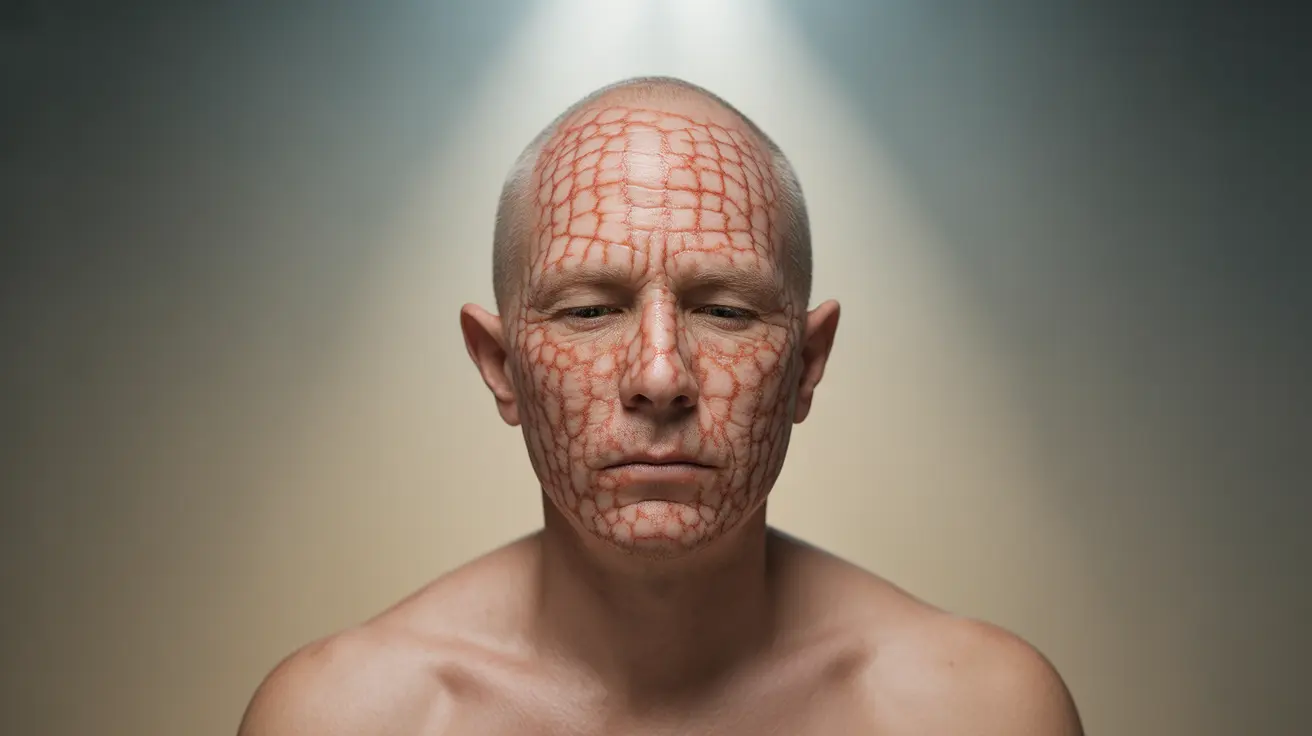Toasted skin syndrome, medically known as erythema ab igne, is a skin condition that develops from repeated exposure to moderate heat sources. While not as widely known as other skin conditions, it's becoming increasingly common in our modern world due to the frequent use of laptops, heating pads, and other heat-producing devices against our skin.
This condition can affect anyone who regularly exposes their skin to heat sources between 109-116°F (43-47°C), temperatures that are warm enough to cause gradual skin changes but not hot enough to cause immediate burns. Understanding its causes, symptoms, and prevention is crucial for maintaining healthy skin in our technology-driven world.
What Causes Toasted Skin Syndrome?
Toasted skin syndrome develops when skin is repeatedly exposed to heat sources that aren't hot enough to burn but warm enough to cause gradual changes in skin structure. Common causes include:
- Laptop computers resting on thighs
- Heated car seats
- Space heaters
- Heating pads or electric blankets
- Professional exposure to heat sources
- Warming devices used for chronic pain
Identifying the Symptoms
The characteristic appearance of toasted skin syndrome makes it relatively distinct from other skin conditions. Key symptoms include:
- Reddish-brown discoloration
- Net-like or reticular pattern on the skin
- Mild itching in some cases
- Skin hyperpigmentation
- Subtle texture changes
How It Differs from Sunburn
Unlike sunburn, which appears uniformly red and develops quickly, toasted skin syndrome creates a distinctive mottled or web-like pattern that develops gradually over time. The discoloration tends to be more permanent than sunburn and can take months or years to fade, even after heat exposure stops.
Treatment Options
While toasted skin syndrome can be concerning, several treatment approaches can help manage the condition:
Immediate Steps
- Remove or limit exposure to the heat source
- Cool the affected area
- Avoid further heat exposure to the affected skin
Medical Treatments
Treatment options may include:
- Topical retinoid creams
- Hydroquinone for hyperpigmentation
- Moisturizers to maintain skin health
- Laser therapy for persistent cases
Prevention Strategies
Preventing toasted skin syndrome is easier than treating it. Key prevention measures include:
- Using laptop cooling pads or stands
- Taking regular breaks from heating devices
- Setting time limits for heating pad use
- Maintaining distance from space heaters
- Using protective barriers between heat sources and skin
Long-term Health Considerations
While generally not dangerous, toasted skin syndrome requires attention and proper management to prevent potential complications. In rare cases, chronic exposure could lead to more serious skin changes, making prevention and early intervention important.
Frequently Asked Questions
What are the symptoms of toasted skin syndrome, and how is it different from a sunburn? Toasted skin syndrome presents as a reddish-brown, net-like pattern on the skin, while sunburn appears as uniform redness. The condition develops gradually from heat exposure, unlike sunburn which occurs rapidly from UV exposure.
How do you treat toasted skin syndrome, and what are the best topical treatments for it? Treatment primarily involves removing the heat source and allowing the skin to heal. Topical treatments may include retinoid creams, hydroquinone for pigmentation, and moisturizers. Severe cases might require laser therapy.
Can prolonged use of heating pads or electric blankets cause toasted skin syndrome? Yes, prolonged use of heating pads or electric blankets can cause toasted skin syndrome. It's recommended to limit use to 15-20 minutes at a time and avoid falling asleep with these devices.
How can I prevent toasted skin syndrome when using laptops or heated car seats? Use laptop cooling pads or stands to create distance between the device and your skin. For heated car seats, use them on lower settings and take regular breaks. Consider using protective barriers like blankets or clothing.
Does toasted skin syndrome ever lead to more serious health issues like skin cancer? While rare, chronic cases of toasted skin syndrome have been associated with the development of squamous cell carcinoma in some cases. However, most cases resolve without serious complications when the heat exposure is eliminated.




